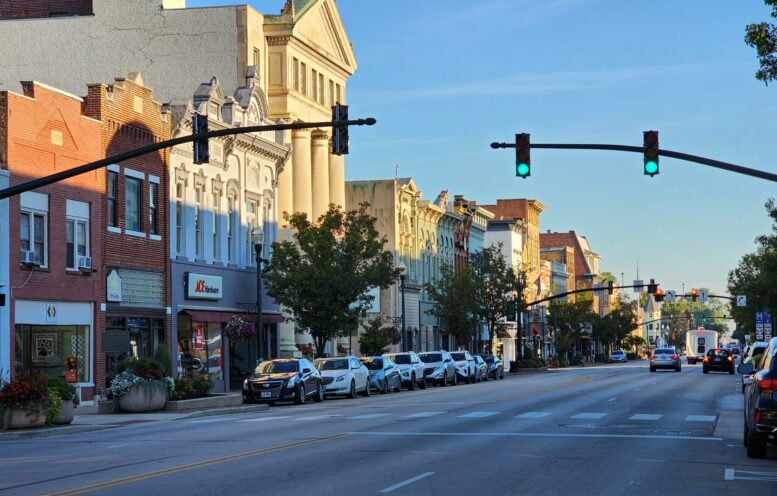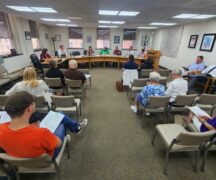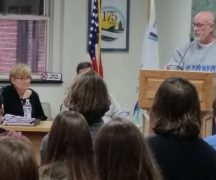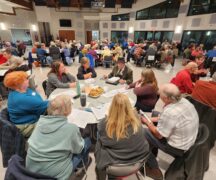By JAN McLAUGHLIN
BG Independent News
Bowling Green wants to offer shop patrons and pedestrians a glimpse at the downtown area during its glory days, its disasters, and its rebuilding. To do so, the city’s Historic Preservation Commission is digging into the downtown’s past to share on historic markers.
City Planning Director Heather Sayler and Historic Preservation Commission President John Sampen got City Council on board with the project Tuesday evening.
Sayler showed black and white photos and a postcard of the dusty, bustling downtown in 1880, 1906 and 1925. It’s photos like those that will be part of the 16 signs that will address different historical features of the community in the downtown, Wood County Courthouse, and Wooster Green areas.
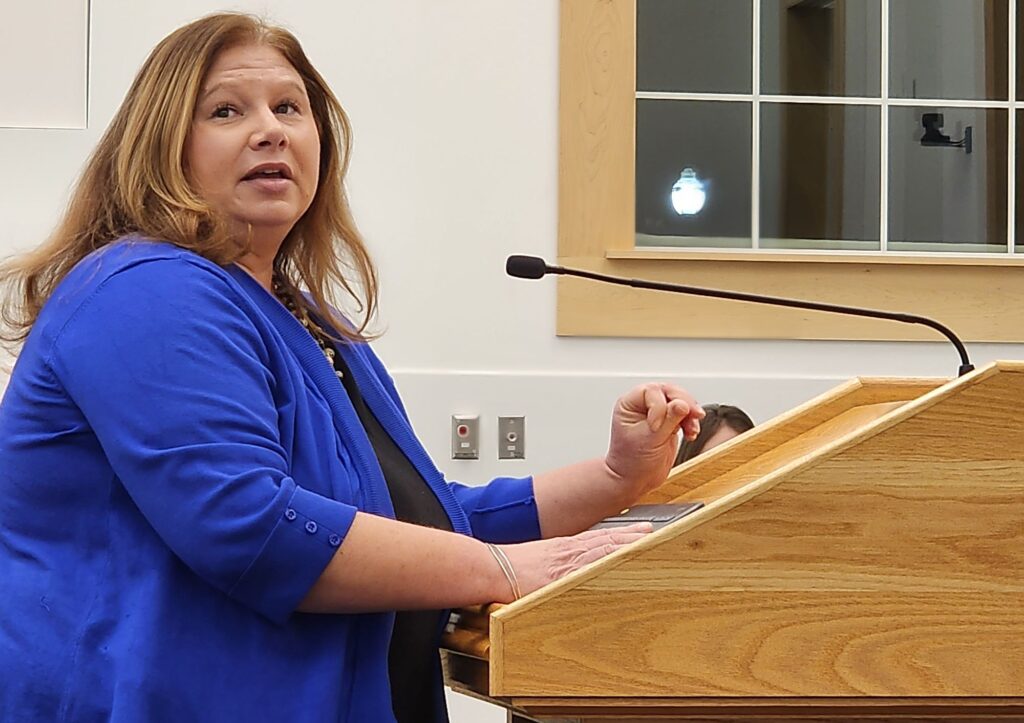
Each sign is the product of a “terrific amount of research,” Sampen said.
For example, the story will be told of the Lincoln Building (at the northeast corner of Main and Wooster streets) thought to be the oldest building still standing in the downtown, Sayler said. Built in 1874, it survived two massive fires in the downtown, only to have its front facade caved in when a cattle truck crashed into it in 1944.
The 2-foot by 3-foot signs will each be mounted on a single steel pedestal, and are designed to last 10 to 15 years, Sampen said.
Council member Joel O’Dorisio asked if there will be accommodations for the sight impaired, such as audio links or braille. Sayler said the signs are designed to be accessible for people using wheelchairs, but other accommodations may be the next step.
Mayor Mike Aspacher praised Sayler, the historic preservation commission and local historians for undertaking all the research for the signs.
“They will be a great enhancement to our downtown area,” Aspacher said.
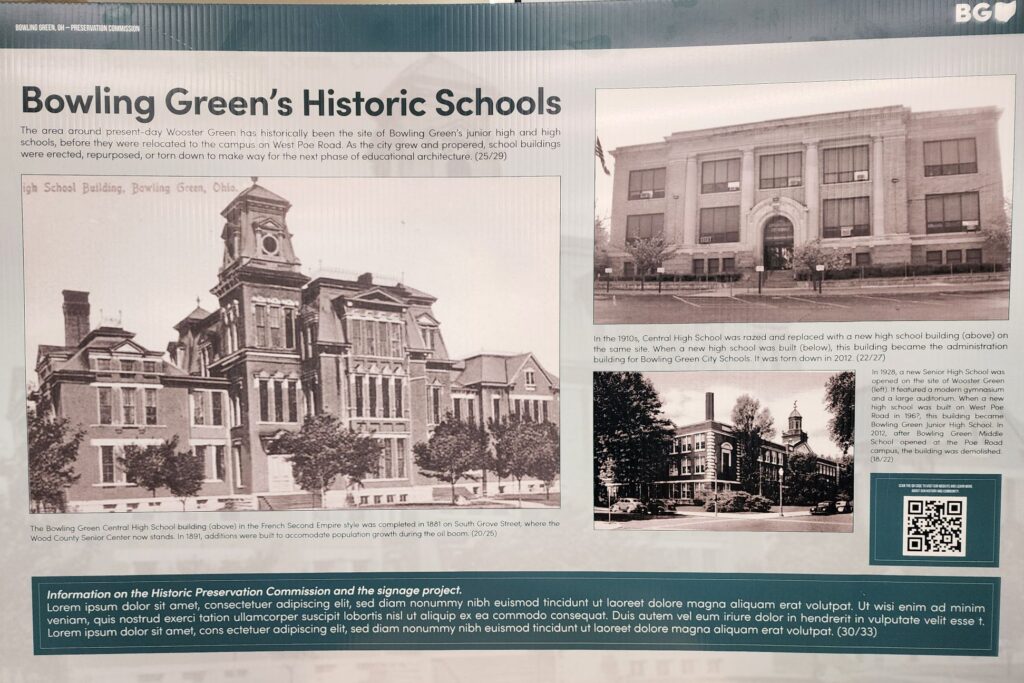
Sayler said more high resolution historic photos are still being sought for the signs, if any community members have some they could lend the project. Photos may be emailed to HSayler@bgohio.org.
Bowling Green’s downtown has a storied past. Its buildings once held grand hotels, an opera house and theater. Its streets ran with horse-drawn buggies, and trolley lines. Its business owners were often veterans of the Civil War.
The downtown hosted famous visitors like Hollywood heartthrob Clark Gable, and was the site of a shootout with infamous gangster bank robber Pretty Boy Floyd. It was where Jimmy Hoffa came for a quick, few questions asked, wedding.
The signs will point out sites known for their architectural feats, their famous owners, or disastrous fates.
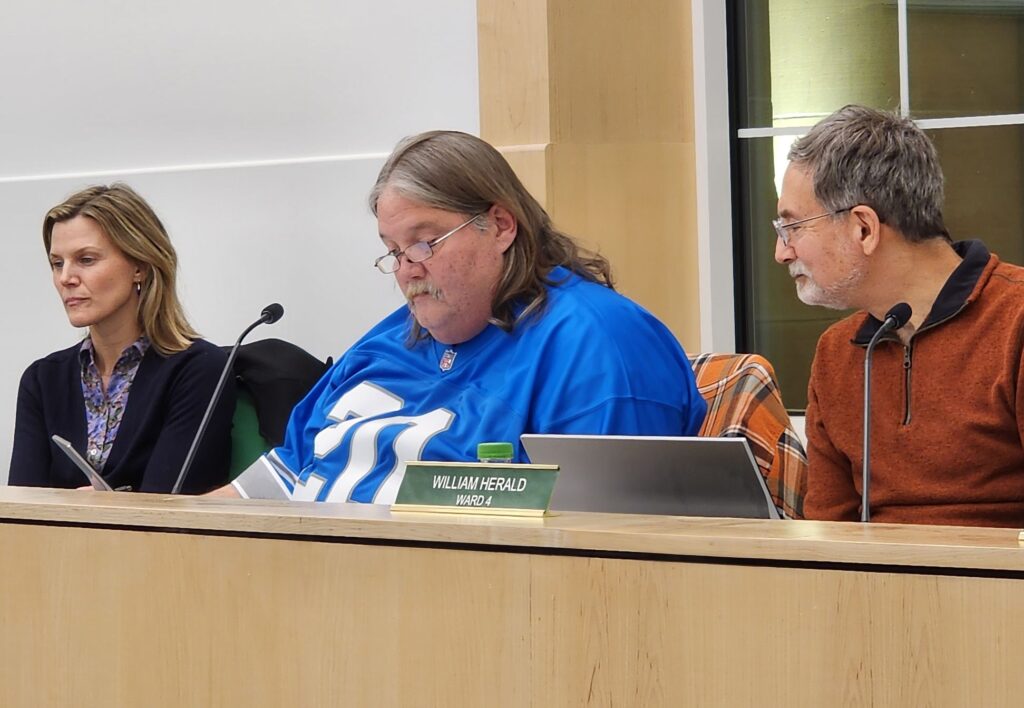
Following is a draft list of the signs planned for the downtown area:
- A general history of downtown architecture, dominated by Queen Anne and Classical Revival, with some Italianate and Romanesque styles, mostly built after the Civil War.
- Information about former schools, with that sign to be located in Wooster Green.
- A description about the Boom Town area created by revenues from the oil boom, also to be located in Wooster Green.
- The area of North Church Street and North Main Street once used for the old post office, school, library and city hall. The sign will be placed between the new city building and the library.
- The northwest block of downtown, focusing on the ClaZel theater, Masonic Temple, butcher shop, drug store and other businesses.
- The police building, on West Wooster Street, telling about the former courthouse, town hall and fire station.
- The southwest block of downtown, highlighting the “Union Block,” the classic Lehmann Building, the Brown Hotel and former bank.
- Churches, describing some current churches around downtown, architecture, and some that have been changed into homes, with that sign being posted in Wooster Green.
- Northeast Block, including the “Lincoln Block” which has the oldest block dating back to 1874, and site of a famous truck accident.
- Southeast Block, which boasted the Millikin Hotel, an opera house/ballroom, earlier hotel, plus stories of Clark Gable, oil money and Pretty Boy Floyd.
- Hankey Block, established by a veteran of the Civil War, during the Oil Boom days.
- Wood County Courthouse, which is on the National Register and is a locally designated historic landmark, located on East Court Street.
- East Court Street area, with Trinity United Methodist Church, the old Women’s Club and houses used for “marriage mill.”
- Southeast corner of South Prospect Street and East Wooster Street, featuring the old armory and funeral home, known to have one of the first female embalmers and funeral directors in the country.
- Northeast corner of North Prospect Street and East Wooster Street, highlighting the former Ross Hotel and church.
- A sign dedicated to transportation in the city, including interurban lines, trolley cars, horse and buggies, bicycles, trains and early vehicles.
The project is made possible in part by a federal grant from the U.S. Department of Interior, National Park Service, and administered by the State Historic Preservation Office of the Ohio History Connection.

